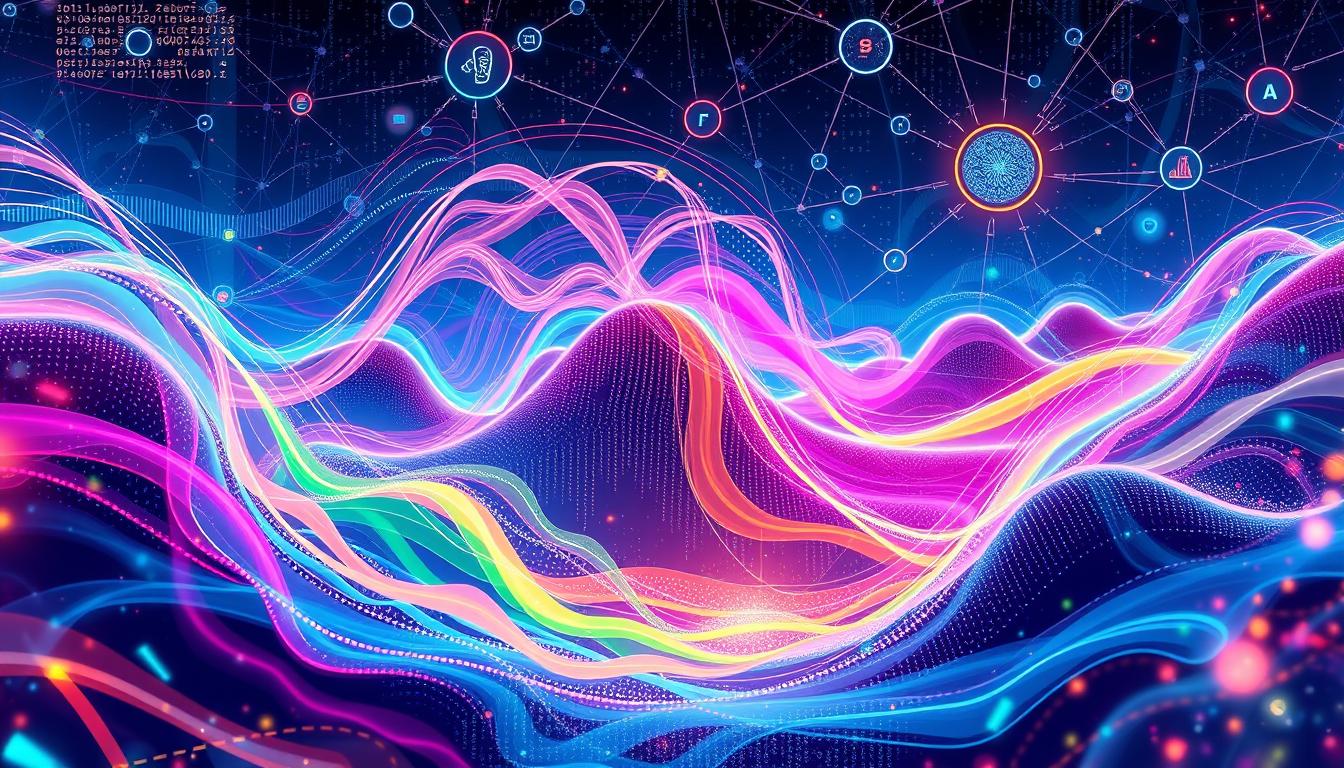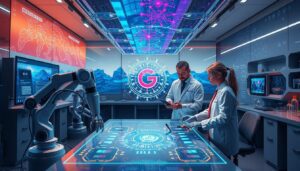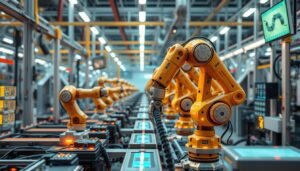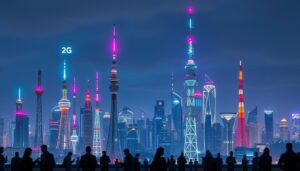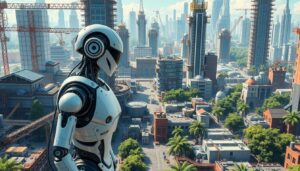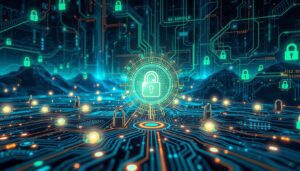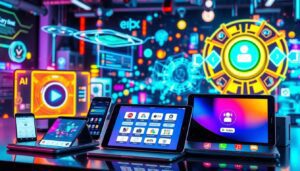How Generative AI is changing creative industries. Generative AI is bringing about significant changes in the creative industry. This new tech opens up new ways for artists to express themselves. It’s speeding up innovation in many areas, from music to visual design.
The way we design, produce art, and create content is being transformed by generative AI. It produces new, human-like work by utilizing natural language and machine learning. This technology is challenging our preconceived notions about what is feasible in the fields of design and art.
Key Takeaways
- By Motivating new kinds of creative expression and promoting creativity, generative AI is revolutionizing the creative industries.
- Designers and artists are Having authority to push the limits of their trade and Reimagine the creative process with AI-powered tools for creating content.
- AI integration is increasing cost and time efficiency, facilitating creative cooperation, and simplifying industrial processes.
- A important subject of focus is the ethical issues encompassing the use of AI-generated information.
- The ongoing development and acceptance of generative AI technology will influence the future of the creative fields.
The Development of Content Creation Tools Driven by AI
AI tools are bringing about quick change in the creative industry. These resources assist musicians, authors, and artists in finding new forms of expression.
Text Generation and Natural Language Processing
AI-powered text tools generation are altering the way we write. They can make text that’s clear and fits the context. This includes everything from news to stories.
With AI text generation, writers can work faster and think of new ideas. They can explore possibilities they never thought of before.
Image and Art Generation Platforms
AI is also changing visual art. AI picture production is used by programs like DALL-E and Midjourney to create artwork in response to text cues. This lets artists create in ways they never could before.
These tools help artists go beyond what’s possible with traditional art. They make amazing and unique pieces.
Audio and Music Creation Software
AI is also changing music and audio production. AI music composition software can create new songs and even copy famous artists’ styles. This gives musicians and producers a lot of freedom.
They can work with AI to make music in new and exciting ways. This opens up new possibilities for musical expression.
| AI-Powered Tool | Key Capabilities | Potential Applications |
|---|---|---|
| Text Generation and NLP | Generating coherent and contextually relevant text | News articles, blog posts, poetry, fiction |
| Image and Art Generation | Creating unique and visually stunning artworks | Digital art, illustrations, concept design |
| Audio and Music Creation | Generating original compositions and arrangements | Music production, sound design, film/game scoring |
AI tools are changing the creative world. They let artists, writers, and musicians explore new areas. The future of creativity will be dynamic and fascinating as AI advances.
How Generative AI is Changing Creative Industries
The creative industry is evolving because to generative AI. It’s affecting graphic design, advertising, film, and more. AI tools are making creative work faster and more efficient.
Generative AI lets artists and designers create new content. Tools like GPT-3 and DALL-E 2 help make text, images, and audio quickly. This means faster ideas and less time spent on old tasks.
Creative AI tools also change how we work together. Designers and filmmakers can use AI to improve their work. This frees up time for more creative tasks.
AI’s impact goes beyond making content. In ads, AI helps make campaigns more personal and effective. It tests messages and improves ads in real-time.
As AI gets better, creative fields will see big changes. These technologies will shape how we create and express ourselves. They’ll open up new ways to be creative and innovative.
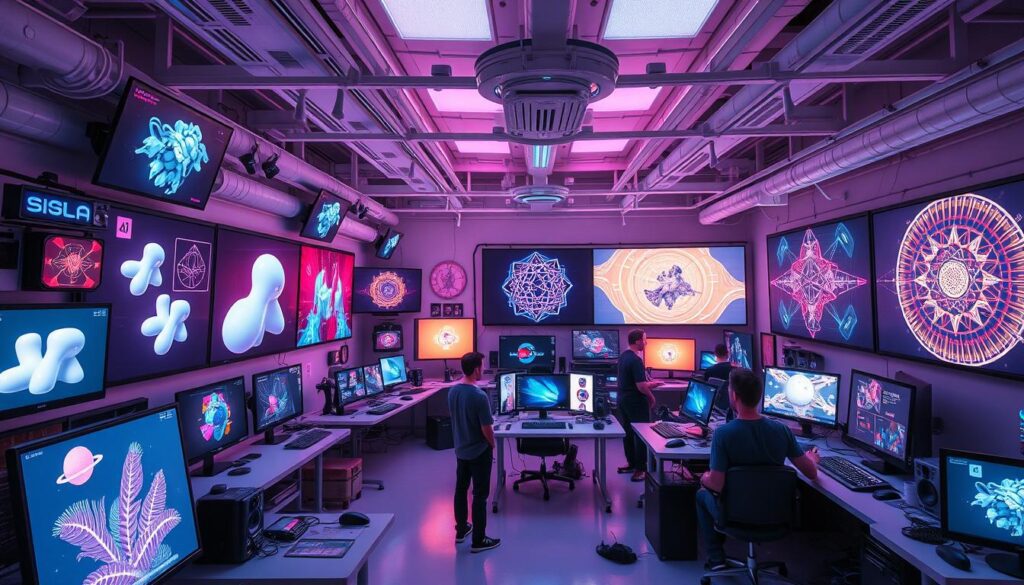
Transforming Traditional Creative Workflows with AI
AI-powered technologies are causing rapid change in the creative sector. These tools are making old ways of working better. They help make projects faster and cheaper, opening up new possibilities.
Streamlining Production Processes
AI is changing how we make videos and content. It does tasks like editing and color work automatically. This means creatives can focus on the big ideas, making their work better.
Enhancing Creative Collaboration
AI tools also make teamwork better. They help share ideas and work together smoothly. This leads to more creative and innovative projects.
Cost and Time Efficiency Benefits
Using AI saves money and time. It cuts down on manual work, making things faster and cheaper. This means creatives can do more, making more money.
| AI-Powered Tool | Application | Efficiency Gains |
|---|---|---|
| AI video editing | Automated video editing, color grading, and asset management | Reduced production time, improved consistency, and enhanced creative control |
| AI content creation | Generating text, images, and audio for a variety of creative projects | Increased output, personalized content, and cost savings |
| Creative AI tools | Collaborative platforms, ideation assistance, and creative workflow automation | Streamlined creative processes, improved team coordination, and enhanced productivity |
AI is changing the creative world. It speeds up, lowers costs, and fosters creativity. New and improved techniques of functioning are replacing the outdated ones.
“The way we approach creative tasks has been completely transformed by AI-powered tools, which enable us to operate more effectively and intelligently than ever before.”
Challenges and Ethical Considerations in AI-Generated Content
The appearance of generative AI applications and AI content generation is changing the artistic sectors. But, there are growing concerns and ethical issues to tackle. Creative AI tools bring challenges like copyright, authenticity, and their impact on human creativity and jobs.
The ownership of the rights to content produced by AI is a major worry. It’s unclear if the user, the AI, or its developers are to blame. This legal ambiguity can impede innovation and cause conflicts.
Another problem is the reliability of AI-generated content. As AI gets better, it’s hard to tell if A creation was made. by a human or an AI. This could lead to distrust in digital content.
- AI tools might also replace human creatives, causing job losses and changing the industry.
- We need to think about bias, privacy, and responsible use of these technologies. This ensures AI content generation and generative AI applications benefit everyone.
It’s critical that everyone discuss these issues as innovative AI tools advance. The employment of these technologies must be constructive rather than destructive.
| The challenge | An explanation |
|---|---|
| Copyright and Possession. | When AI produces original works, ownership and rights are unclear. |
| Genuineness and Credibility. | Having trouble telling the difference between content produced by AI and human. |
| Effects on Human Employment and Creativity. | Possible replacement of human artists by AI-powered instruments. |
| Moral Aspects to Take into Account. | Privacy, bias, and ethical AI technology development. |
“It is imperative that industry stakeholders, legislators, and the general public have open discussions as innovative AI tools develop in order to address these issues and guarantee that the advantages of new technologies are realized while reducing any potential hazards or negative effects.”
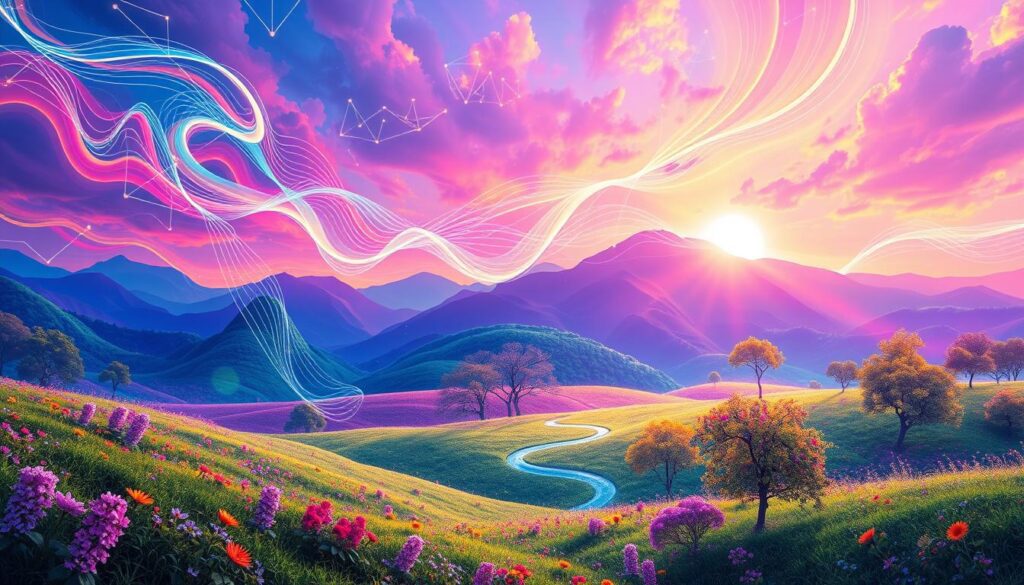
In conclusion: The Future of Creative Industries in the AI Era
How Generative AI is changing creative industries. The creative sector is changing due to the appearance of of generative AI. It’s making text, images, and sounds with ease. This new tech opens up exciting chances but also brings up big questions about ethics.
As AI gets better, it will make making things faster and cheaper. But, humans are still key. AI will be used by creatives to enhance their job and discover fresh approaches to creativity.
AI’s power and human thoughts will coexist in the creative future. By using AI wisely and thinking about ethics, creatives can lead the way. The future appears promising, full of innovative concepts, increased productivity, and a modified creative process.
FAQ
How is the creative industry changing as a result of generative AI?
High level man-made consciousness that can make unique text, designs, and sound is known as generative artificial intelligence. By enabling new forms of artistic expression, speeding up production, and improving human-machine collaboration, it is revolutionizing creative fields.
Which AI-powered technologies are available for creating content?
Numerous AI technologies are available for various kinds of content. For example, there’s software for writing and talking like humans, platforms for making images and art, and tools for creating music and audio.
What effects is generative AI having on particular creative industries?
Film, publicizing, and visual computerization are among the businesses that are being changed by generative artificial intelligence. It works with task mechanization, improves coordinated effort, and makes new roads for innovativeness.
What advantages may creative workflows get from integrating generative AI?
When used to creative work, generative AI can increase productivity and reduce costs. It saves time and money, enhances teamwork, and facilitates more efficient production.
What ethical issues and difficulties accompany content produced by artificial intelligence?
There are advantages and disadvantages to generative AI. There are worries about copyright, authenticity, and how it might affect human jobs in creative fields. These issues need careful thought and responsible use of the technology.
